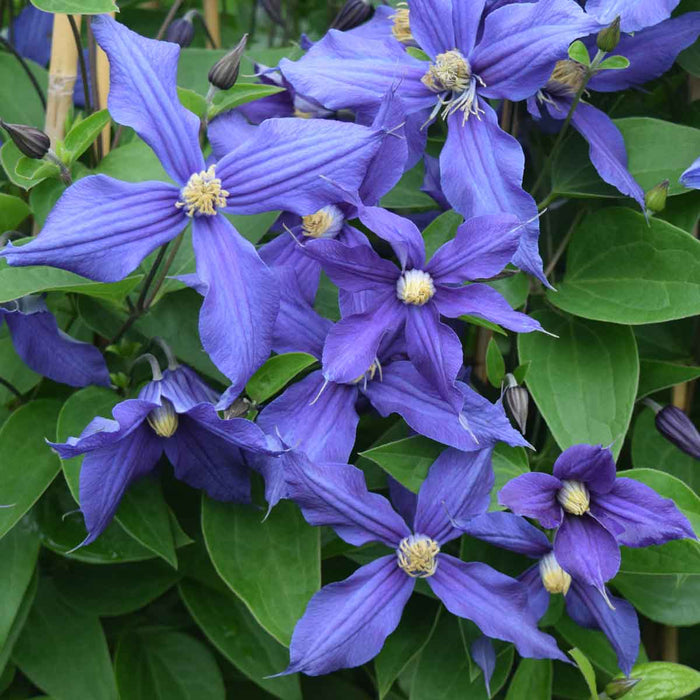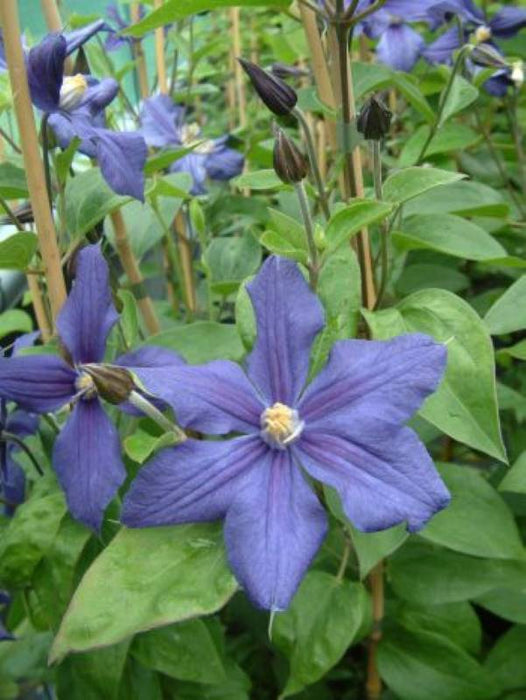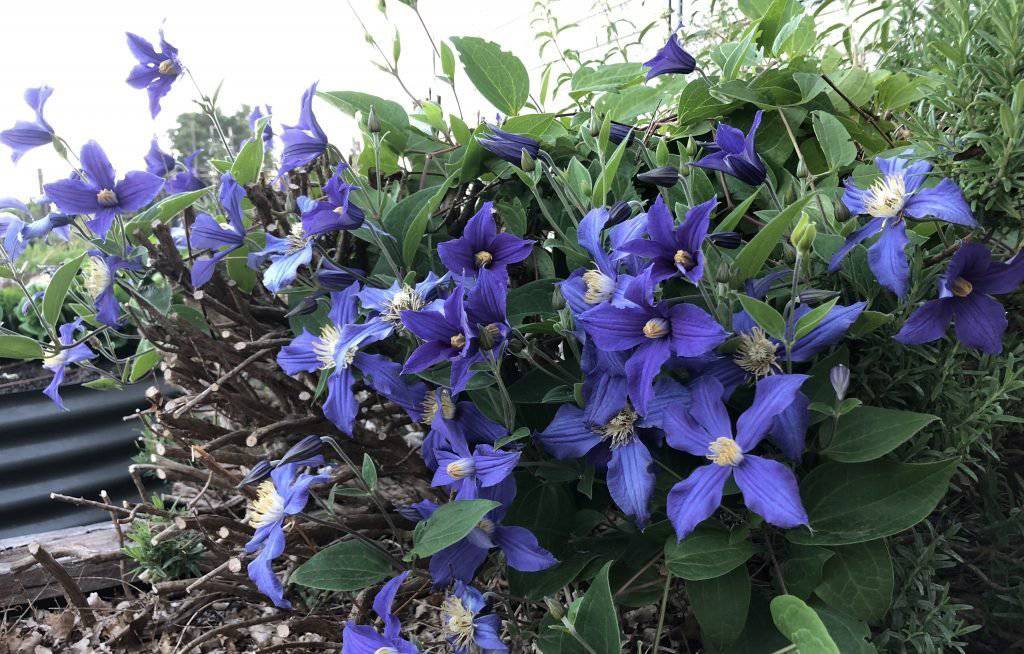
Clematis durandii- Starter Plant, NON CLIMBING FLOWERS
Most orders are processed by the next day
Select your desired size and/or color from the available options.
Rich bell-shaped indigo blue 5-6″ flowers with white anthers. It makes an interesting cut flower. Bloom July, August and September. Pruning type 3.
Unlike most clematis, Clematis x durandii is not a climbing variety, making it the perfect clematis for garden borders, where it's delicious indigo blue flowers will emerge amongst other plants.
The flowers have 6 to 8 narrow, twisting sepals and in the centre golden yellow anthers. Although not climbing, it can still be trained up trellis or obelisks using ties. It is simple to grow and will bloom between June and September. The Royal Horticultural Society has awarded this beautiful plant its Award of Garden Merit. Height: 2m (6'). Spread: 1m (3') Pruning group: 3.
Durandii is a smaller flowered, non-twining, deciduous vine which features showy, 4" diameter, bluish purple flowers with creamy stamens from early summer into fall. Blooms on new growth. Noted for its long bloom peri
Group Three: These Clematis only flower on new growth and require hard pruning in winter to encourage new growth. Some will naturally die down to the ground. They tend to flower later in the season, around November onwards and are terrific during Summer and Autumn. This group includes the viticellas, texensis and herbaceous varietie
PLANTING CLEMATIS IS AS EASY AS 1-2-3
- 1. Loosen the soil to a depth of 12” and mix in several handfuls of compost and ¼ to ½ cup of all-purpose granular fertilizer (follow package directions).
- 2. Dig a hole deep enough for the roots, and position the clematis so the crown of the plant (where the roots meet the stem) is right at the soil line.
- 3. Cover the roots with soil, allowing the growing tips to be barely visible.
TIPS FOR PLANTING CLEMATIS
Though clematis like their “heads” in the sun, the bottom of the plant should be shaded so the roots stay relatively cool.
During the first growing season, your new clematis should be watered whenever the weather is dry. Mulching around the base of the plant will help retain moisture and keep the roots cool. Sometimes clematis need a little help holding onto a trellis or structure. You can use soft twine, waxed string or even zip-ties to attach the vines and provide extra support.
Prune clematis vines to encourage new growth, which results in more flowers.
No matter which pruning category your clematis plants fall into, flowering will diminish on all clematis vines without pruning.
Left unpruned the new growth is confined to the tops or ends of the vines and that is where your flowers will be
CARING FOR CLEMATIS AFTER THEY BLOOM
After the flowers fade, some clematis develop decorative seed heads. These can be left in place throughout the growing season. Though it's not necessary, you can also cut off the seed heads to keep the plant looking neat. Some clematis varieties bloom again in late summer or early fall. If you think your clematis could be a rebloomer, remove only the spent flower heads and avoid cutting back the foliage.
Early spring is the best time to prune a clematis. There are two approaches to pruning. Some varieties produce new growth on last year’s vines, so they should only be pruned to shape the overall plant. Others varieties die back to the ground. Since any new growth comes from the base of the plant, all of the prior year's vines can be removed. Until you get to know your clematis, it’s best to wait until the plant has sprouted new growth. That way you can see where it's coming from and prune accordingly.
Fertilize your clematis in the spring when the first leaves start to unfurl. Follow package instructions, sprinkling approximately ¼ to ½ cup of all-purpose granular fertilizer around the base of the plant.
If your clematis outgrows its space, you can control the growth by simply cutting back the entire plant to a height of 5". This can be done in fall or early spring. Stray vines may also be trimmed back any time during the growing season.
LET OUR CUSTOMER SPEAK FOR US

![[Seeds] - Caribbeangardenseed](http://caribbeangardenseed.com/cdn/shop/files/gift-card-gift-card-1_1024x1024_dfa857db-9150-4315-a362-7f0bb3fb9c47_60x28.png?v=1703978838)


